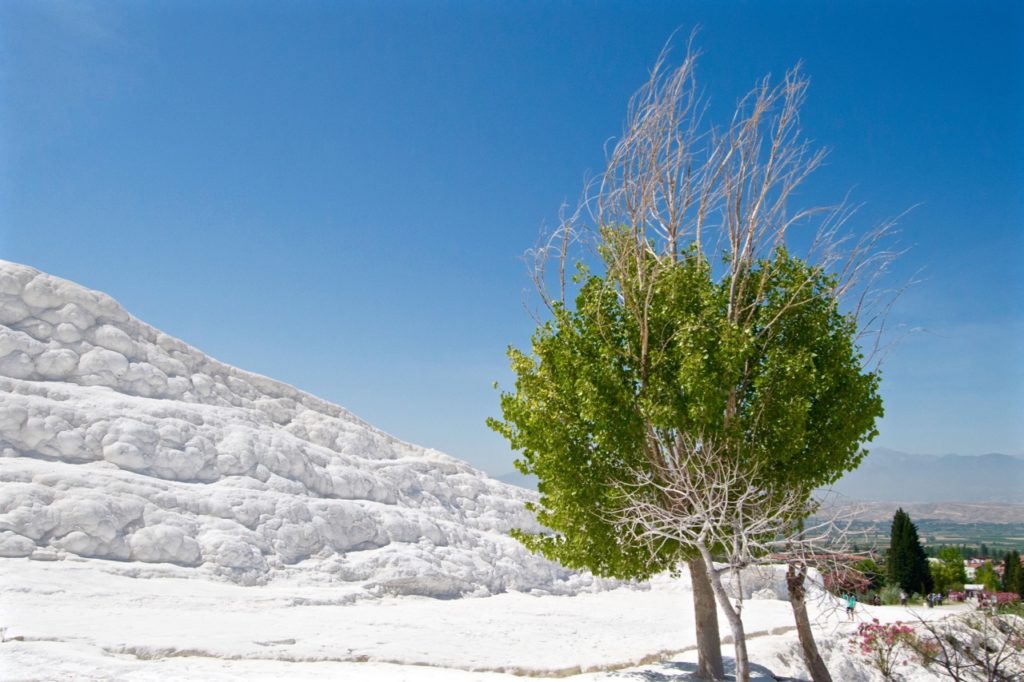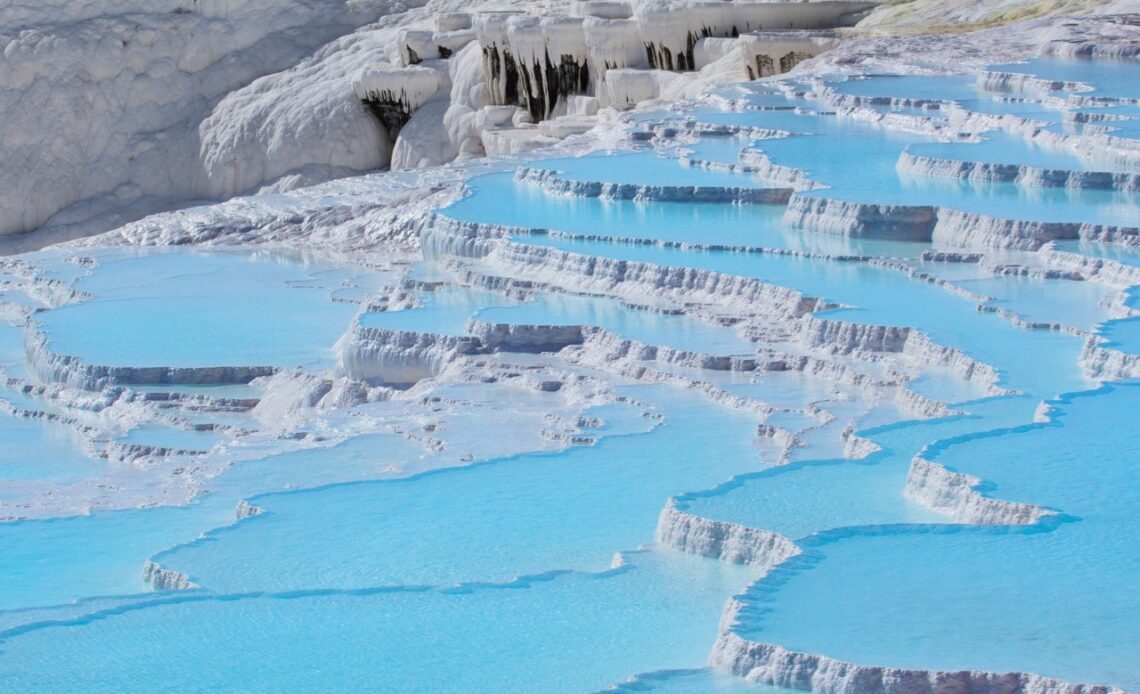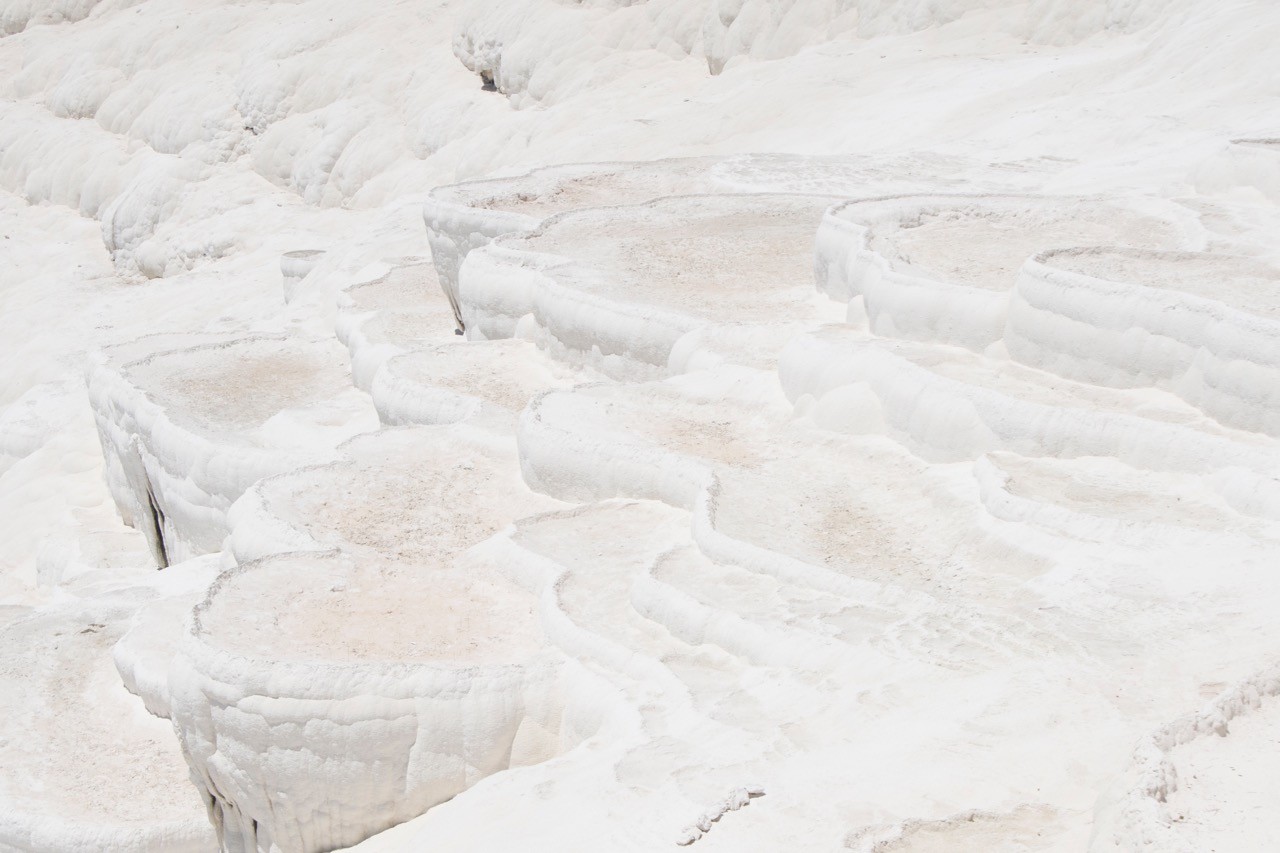Read our tips on visiting Pamukkale in Turkey, including what to wear, what to pack and what not to miss
Pamukkale, though Turkey’s most popular attraction by numbers, is barely known outside its country borders. It’s the iconic architecture of Istanbul and the cave dwellings of Cappadocia that steal the spotlight, but Pamukkale with its cascading travertine terraces deserves attention as well.
Sweeping limestone cliffs of a blinding white hue rise above pools of powder blue. Petrified stakes of limestone hang from chalky roots – like in Superman’s fortress of solitude or a Tim Burton nightmare if his nightmares were good.
Pamukkale’s surreal landscape was formed over millennia by limestone deposited by 17 hot springs in the area. Sadly, its natural beauty was almost lost when hotels sprung up around the area in the 1960s and a road was built to allow motorbikes direct access over the slopes. The hotels drained the thermal waters to fill their swimming pools and the terraces turned a greyish brown.
Thankfully, in 1988, UNESCO stepped in and declared Pamukkale a World Heritage Site. The hotels were demolished and a series of artificial pools were built atop the road to hide the damage caused. Today, there are strict controls on development and tourism in the area, allowing you to visit in good conscience. Here’s what to know before you go.
Pamukkale doesn’t look like the pictures (but it’s stunning anyway)
The lustrous terraces as depicted in guidebooks and tourist board posters do not exist – at least not right now.
We’re told that spring water has been diverted to allow the terraces time to recover from past mistreatment. When and how (or if!) the terraces will return to their former glory is currently unconfirmed.
With that said, don’t let the difference put you off from visiting Pamukkale. It is still stunning and most certainly worth the stop.
Expect crowds at Pamukkale
Most foreign tourists visit Pamukkale on a day trip from the coast, which means they arrive late morning or early afternoon. As such, you could opt to stay in Denizli and take a public minibus first thing in the morning for minimal crowding (see ‘How’ below).

Expect crowds as the day draws on, from Speedo-sporting Europeans to overzealous local children….
Click Here to Read the Full Original Article at Atlas & Boots…

